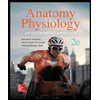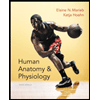Introduction to Experiment 2: Protein Digestion by Pepsin In this experiment, we will look at for evidence of protein digestion using albumin, a protein, and Biuret reagent. Biuret reagent is used to test for the presence of proteins, or more specifically, peptide bonds. When long polypeptide chains are present the solution will turn violet, and when shorter polypeptide chains are present the solution will turn a lighter pink color. 1. What is/are the end product(s) of protein digestion? 2. What is the purpose of the enzyme pepsin? 3. If protein digestion has occurred, will the solution be violet or pink (choose one)? Explain. Hypotheses/Predictions (See Methods section for details): 1. What color do you expect the solution to turn when the P tubes are mixed with Biuret
Introduction to Experiment 2: Protein Digestion by Pepsin In this experiment, we will look at for evidence of protein digestion using albumin, a protein, and Biuret reagent. Biuret reagent is used to test for the presence of proteins, or more specifically, peptide bonds. When long polypeptide chains are present the solution will turn violet, and when shorter polypeptide chains are present the solution will turn a lighter pink color. 1. What is/are the end product(s) of protein digestion? 2. What is the purpose of the enzyme pepsin? 3. If protein digestion has occurred, will the solution be violet or pink (choose one)? Explain. Hypotheses/Predictions (See Methods section for details): 1. What color do you expect the solution to turn when the P tubes are mixed with Biuret
Human Anatomy & Physiology (11th Edition)
11th Edition
ISBN:9780134580999
Author:Elaine N. Marieb, Katja N. Hoehn
Publisher:Elaine N. Marieb, Katja N. Hoehn
Chapter1: The Human Body: An Orientation
Section: Chapter Questions
Problem 1RQ: The correct sequence of levels forming the structural hierarchy is A. (a) organ, organ system,...
Related questions
Question
100%

Transcribed Image Text:Introduction to Experiment 2: Protein Digestion by Pepsin
In this experiment, we will look at for evidence of protein đigestion using albumin, a protein, and
Biuret reagent Biuret reagent is used to test for the presence of proteins, or more specifically,
peptide bonds. When long polypeptide chains are present the solution will turn violet, and when
shorter polypeptide chains are present the solution will turn a lighter pink color.
1. What is/are the end producus) of protein digestion?
2. What is the purpose of the enzyme pepsin?
3. If protein digestion bas occurred, will the solution be violet or pink (choose one)? Explain.
Hypotheses/Predictions (See Methods section for details):
1.What color do you expect the solution to turn when the P tubes are mixed with Biuret
solution and why?
PI
P2
P3
P4
2. The least protein digestion (or none at allD will take place in tubes (P1, P2, P3, and/or P4)?
Why?
What color will these tubes be after the Biuret test?
2.
Lab 8
will have more protein digestion than tube
3. Of the remaining two tubes, tube
Why?

Transcribed Image Text:Introduction to Experiment 1: Starch Digestion by Amylase
In this experiment, we will look for evidence of starch digestion by testing solutions for the presence of starch
and sugars. When starch s present the lodine in Lugols solution turns the solution black, blue, or dark
beown If starch is not present, lodine will dye the solution a yellow color. Benedict's reagent reacts with
freducing sugars, Includinggucose, resulting in a green, orange, or red color. If sugars are not present,
Benedict s reagent remains a light blue color.
1. What is/are the end product(s) of starch digestion?
2. What is the name of the enzyme that digests starch (amylose)?
Hypotheses Predictions (See Methods section for details)
1. When mixed with Lugols solution, test tube Al (amylase only) will have what color and
why?
2. When mixed with Benedict's solution, test tube Al (amylase only) will have what color and
why?
3. When mixed with Lugols solution, test tube A2 (starch only) will have what color and why?
4. When mixed with Benedict's solution, test tube A2 (starch only) will have what color and
why
5. When mixed with Lugol's solution, test tube A3 (glucose only) will have what color and
why?
6. When mixed with Benedict's solution, test tube A3 (glucose only) will have what color and
why?
7. When mixed with Lugol s solution, test tube A4 (amylase and starch) will have what color
and why?
Anatomy and Physiology II, BIOL 2200
Lab 8
8. When mixed with Benedict's solution, test tube A4 (amylase and starch) will have what color
and why?
Expert Solution
This question has been solved!
Explore an expertly crafted, step-by-step solution for a thorough understanding of key concepts.
This is a popular solution!
Trending now
This is a popular solution!
Step by step
Solved in 2 steps

Recommended textbooks for you

Human Anatomy & Physiology (11th Edition)
Anatomy and Physiology
ISBN:
9780134580999
Author:
Elaine N. Marieb, Katja N. Hoehn
Publisher:
PEARSON

Anatomy & Physiology
Anatomy and Physiology
ISBN:
9781259398629
Author:
McKinley, Michael P., O'loughlin, Valerie Dean, Bidle, Theresa Stouter
Publisher:
Mcgraw Hill Education,

Human Anatomy
Anatomy and Physiology
ISBN:
9780135168059
Author:
Marieb, Elaine Nicpon, Brady, Patricia, Mallatt, Jon
Publisher:
Pearson Education, Inc.,

Human Anatomy & Physiology (11th Edition)
Anatomy and Physiology
ISBN:
9780134580999
Author:
Elaine N. Marieb, Katja N. Hoehn
Publisher:
PEARSON

Anatomy & Physiology
Anatomy and Physiology
ISBN:
9781259398629
Author:
McKinley, Michael P., O'loughlin, Valerie Dean, Bidle, Theresa Stouter
Publisher:
Mcgraw Hill Education,

Human Anatomy
Anatomy and Physiology
ISBN:
9780135168059
Author:
Marieb, Elaine Nicpon, Brady, Patricia, Mallatt, Jon
Publisher:
Pearson Education, Inc.,

Anatomy & Physiology: An Integrative Approach
Anatomy and Physiology
ISBN:
9780078024283
Author:
Michael McKinley Dr., Valerie O'Loughlin, Theresa Bidle
Publisher:
McGraw-Hill Education

Human Anatomy & Physiology (Marieb, Human Anatomy…
Anatomy and Physiology
ISBN:
9780321927040
Author:
Elaine N. Marieb, Katja Hoehn
Publisher:
PEARSON